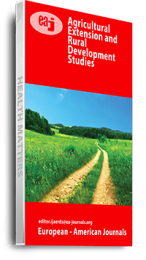Ethiopia is one of the poor countries in the world with high illiterate rates. Illiteracy affects Women to a higher extent due to heavy household workloads, cultural influence, and lack of knowledge. In Benishangul gumuze regional state, women in the household spend a large part of their time on animal activities especially in the home area, most of which are consider culturally less important by women and girls. Moreover, in the region a vast area of arable land and livestock population, production of indigenous dairy cow is becoming decreased productivity and livestock death are enormous due to different insects and diseases and that affects the economy of farmers. The research design was Cross-sectional survey to employ and obtain the required information to meet the objectives of the study. Random and purposively sampling techniques was employing to select respondents of sample household survey, participants of focus group discussion and attendants of key informant interview respectively. Gender roles in the country also vary according to ethnicity, income, and status. Moreover, as has already mentioned, Ethiopian women are largely responsible for nearly all reproductive tasks such as fetching fuel wood and water, cooking, washing, cleaning and child care. The data sources were both primary and secondary data. To enable analysis of data collected through questionnaire, Statistical Package for Social Sciences (SPSS) software (version 20) was use. The mean family size of the respondents was 6.04. The mean and SDs of cattle holding per household was (8.38 ± 4.91). From the total (67.9 %) of respondents were having not owned grazing land for their dairy cows. (98.2%) respondents rear indigenous breeds. More than half of milk was use for family consumption. Milk is selling in the area through an informal market directly to retailer. This observed women traditionally take the majority of responsibilities and contribute more proportion of lobar and time than other members in the household. The results indicate disparities between men, women, boys and girls in their access to, ownership and control of the resource. Moreover, the findings show that access to training opportunities and extension services is reaching more men in households where the women are not participating. Technical strategies to support smallholder cattle production should focus on improving technical and institutional constraints by providing adequate veterinary services, improving fodder cultivation, proper crop residue management and improvement, supplying medicine equipment and medicines, adequate extension service, and improved water availability, and improving breeding systems. To ensure a reliable feed supply throughout the year, fodder conservation practices, especially hay and crop residues, should be encouraged.
Keywords: dairy: empowerment; extension service; gender role; lobar division

